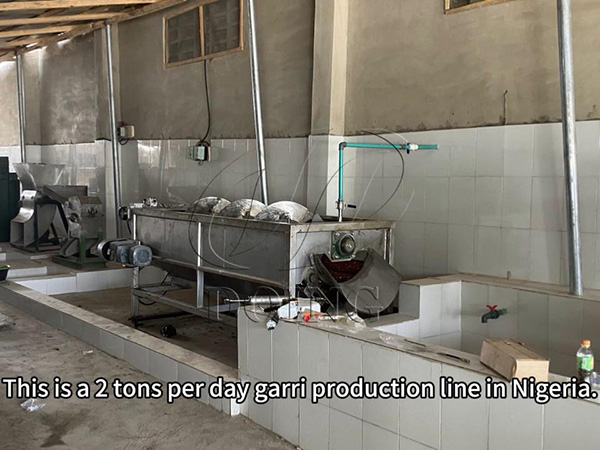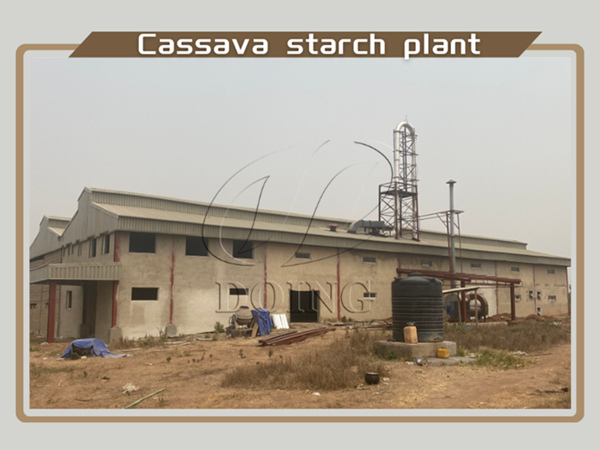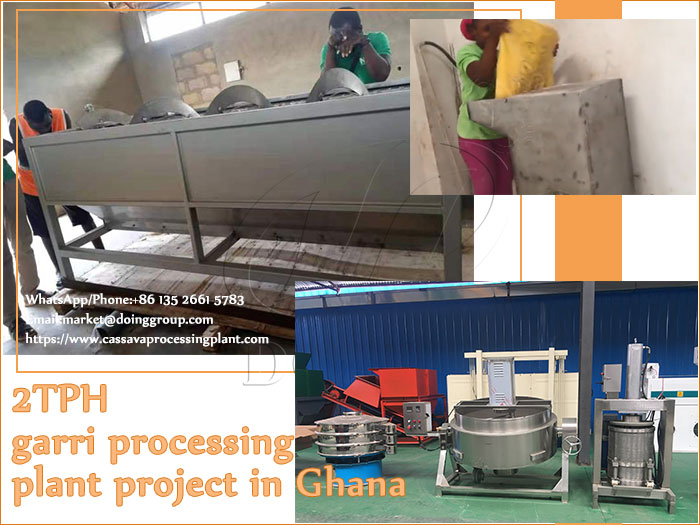
Scaling Up: How Modern Equipment Solves the Limitations of Traditional Cassava Processing
FAQ/ Chat online/ Leave a message/ September 24, 2025
Cassava, a staple food crop for over 800 million people worldwide, particularly in Sub-Saharan Africa, Southeast Asia, and Latin America, has long been hampered by inefficient traditional processing methods. These traditional cassava processing methods—rooted in manual labor, rudimentary tools, and low yields—limit cassava's ability to meet growing food demands and undermine cassava potential to support rural economies.
However, the adoption of modern cassava processing equipment is changing this dynamic, directly addressing the core limitations of traditional methods while enabling large-scale, highly profitable cassava value chains. Henan Jinrui will explain how modern technology can solve traditional limitations and scale up production.
Peeling Equipment: Eliminating Manual Drudgery&Waste
Limitation of Traditional Peeling: Traditional cassava peeling typically involves manual peeling, which takes two to three hours to process every 100 kilograms of cassava tubers. Furthermore, due to the instability of manual operation, the peeling process often results in 20% to 30% pulp loss. Therefore, traditional cassava peeling methods have the limitations in terms of processing efficiency and production capacity.
Modern Solution:Cassava Peelers
Using a cassava peeler, 100 kilograms of cassava can be peeled in just 5–10 minutes, significantly improving efficiency compared to traditional manual methods. Furthermore, the equipment achieves a peeling rate of up to 90%, significantly reducing cassava loss while ensuring efficient peeling. This modern cassava processing equipment effectively overcomes the limitations of traditional cassava processing and facilitates scale-up production.
Grinding Equipment: Solve the Low Efficiency Limitation
Limitation of Traditional Grinding: Traditional manual cassava grinding relies on wooden or metal graters, which are laborious and incomplete. Large chunks of cassava often remain unprocessed, resulting in approximately 15-20% of starch not being extracted. While stone mills are slightly faster, the resulting cassava slurry is still uneven, presenting significant processing limitations.
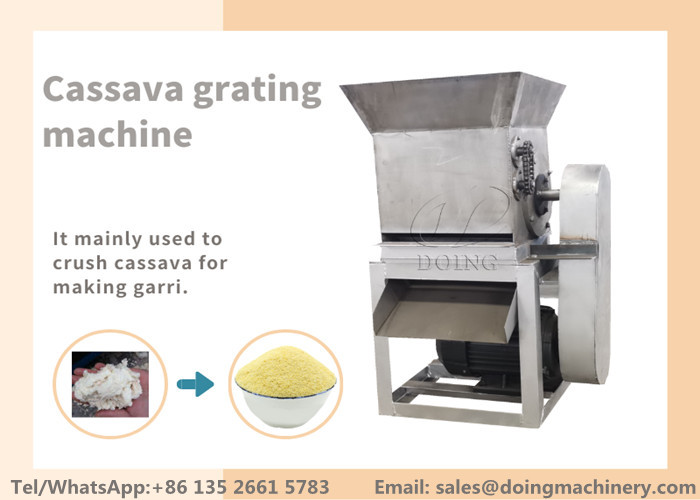 Cassava Grinder
Cassava Grinder
Modern Solutions: Cassava Grinders
Modern processing equipment, such as cassava graters, utilize stainless steel blades to grind cassava into a fine, uniform slurry. For example, a grater with the capacity of 1 tph can replace up to 10 workers, achieving a crushing rate of up to 95%. This modern cassava processing equipment significantly improves production efficiency and reduces labor costs, while ensuring consistent slurry quality and strongly supports the scale-up of cassava processing.
Dewatering Equipment: Solve the Poor Quality Limitation
Limitation of Traditional Dewatering: In traditional cassava processing, dehydration is primarily manual. Workers place crushed cassava pulp into cloth bags and squeeze it with heavy objects (stones) for several hours, removing only 40%–50% of the moisture. Because the pulp is still relatively moist, the entire dehydration process takes 3–5 days in open air. This slow dehydration process can easily lead to mold growth, seriously affecting the quality of the finished product, demonstrating the significant limitations of traditional methods in terms of efficiency and quality.
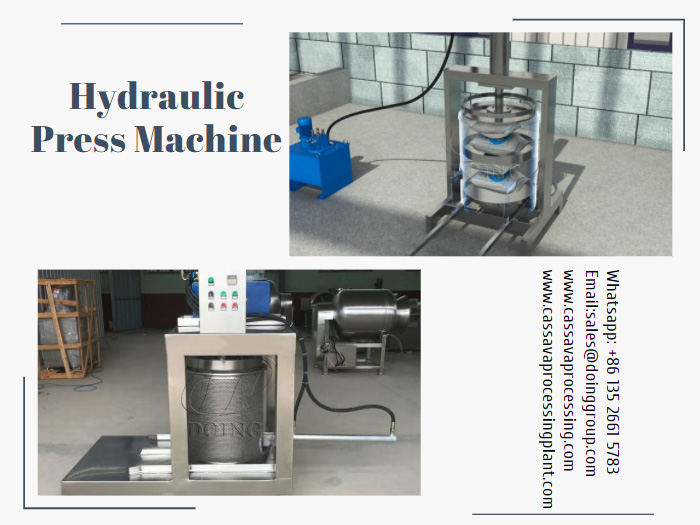 Hydraulic press machine
Hydraulic press machine
Modern Solution: Mechanical Dehydration Equipment
Common cassava dehydration equipment includes hydraulic presses and plate-frame filter presses, both of which are highly efficient modern cassava processing equipment. Based on the mechanical pressing principle, they can rapidly dehydrate cassava pulp. For example, a small hydraulic press can process 500 kg of pulp per hour, quickly reducing the moisture content to approximately 40%, reducing dehydration time by 70% compared to traditional cassava processing methods. This significantly improves dehydration efficiency and ensures product quality, helping achieve the goal of scale-up cassava processing.
Drying Equipment: Achieve High-Efficiency Cassava Processing
Limitation of Traditional Drying: In traditional cassava processing, the drying process typically relies on natural air drying, a method that is completely subject to weather conditions. Rain or high humidity can cause the entire batch of cassava flour or starch to deteriorate, creating significant limitations for traditional cassava processing. Furthermore, open-air drying easily introduces dust and microbial contamination, seriously affecting the quality of the finished product.
Modern Solution: Drying Equipment
Modern cassava processing equipment, such as cassava dryers, completely eliminates dependence on weather conditions and achieves stable and uniform drying results, which is crucial for extending product shelf life. For example, flash dryers suitable for cassava flour and starch processing use efficient heat exchange to quickly reduce material moisture to approximately 12%, significantly improving drying efficiency and product hygiene. This controllable drying method strongly supports consistent quality and scale-up in cassava processing.
Traditional cassava processing has long been limited by low efficiency, high waste, and difficulty in scalability. The application of modern processing equipment is systematically addressing these limitations. From peeling and grinding to dehydration and drying, mechanization and automation have significantly increased production capacity and product quality while reducing labor intensity and post-harvest losses, laying a solid foundation for the scale-up of cassava processing businesses.
If you're planning to invest in a cassava processing project or upgrade an existing production line, choosing a reliable equipment partner is crucial. Henan Jinrui, with decades of experience in the industry, offers comprehensive services, from solution design to equipment support, ensuring efficient startup and stable operations. For more information, please contact Henan Jinrui. Our professional team will wholeheartedly assist you.
Leave A Message
- Do you want to buy machine?
- Yes, I want to buy machine
- No, I want to learn more in advance.
- What is your raw material?
- Cassava
- Potato
- Sweet potato
- Others
- 2. What is the final product you want to produce?
- Garri
- Cassava flour
- Cassava starch
- Cassava chips
- Attiekie
- Bammy
- Others
- 3.What is your capacity plan?
- Small scale garri machine
- 1ton per day
- 2tons per day
- 3tons per day
- 10tons per day
- 20tons per day
- Others
- 3.What is your capacity plan?
- Small scale
- 5tons per day
- 10tons per day
- 20tons per day
- 50tons per day
- 100tons per day
- Others
- 3.What is your capacity plan?
- Small scale
- 5tons per day
- 10tons per day
- 20tons per day
- 50tons per day
- 100tons per day
- 200tons per day
- 300tons per day
- Others
- 3.What is your capacity plan?
- Small scale
- Middle type
- Large scale
- What is your capacity plan?
- Small scale
- 5tons per day
- 10tons per day
- 20tons per day
- 50tons per day
- 100tons per day
- 200tons per day
- 300tons per day
- Others

